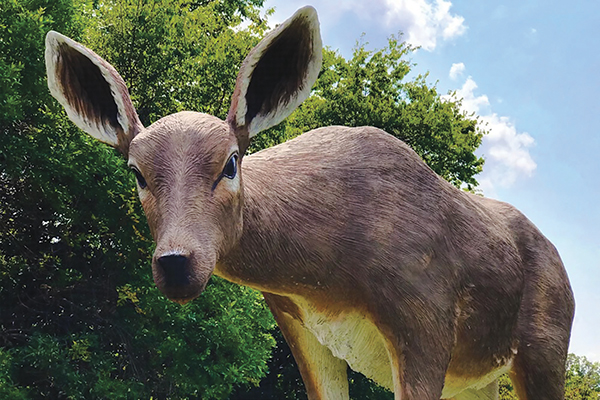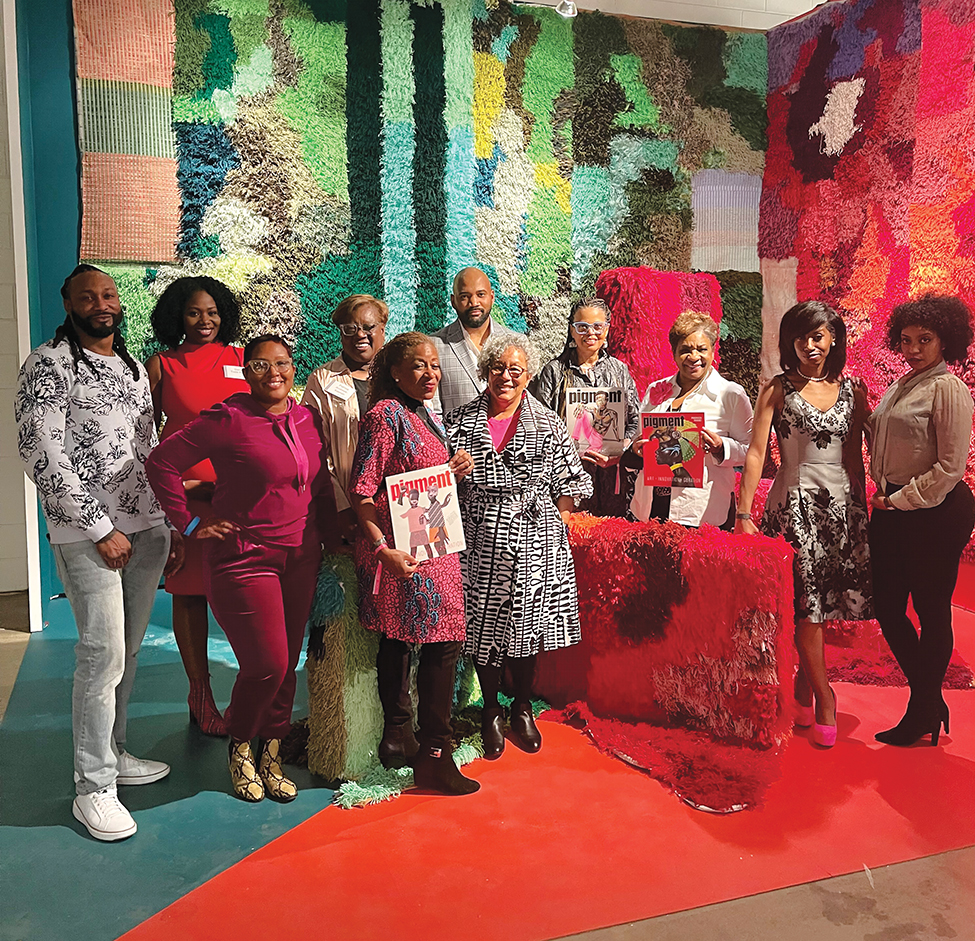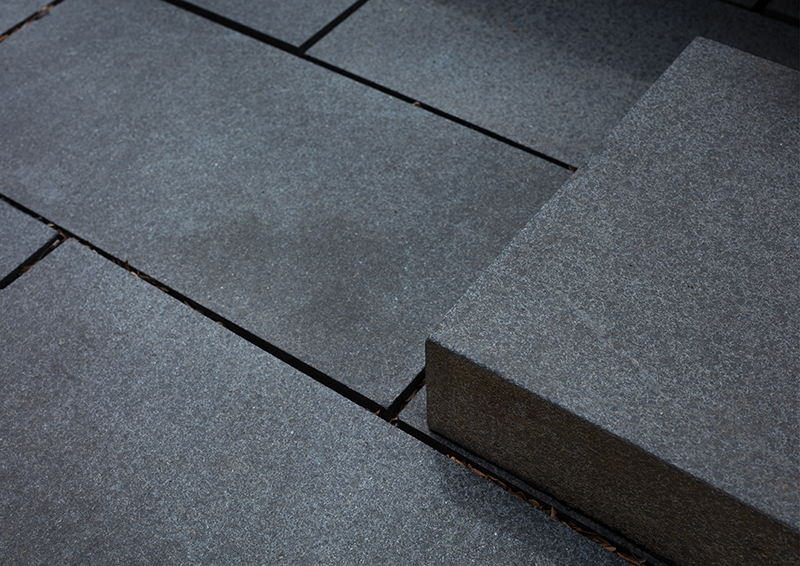A Fine Line at the Chicago Artists Coalition

By DAISY FORNENGO
The Chicago Artists Coalition is an institution aimed at supporting local artists and curators, with both artist residency programs and educational workshops to offer. It’s a beautiful, fresh space with creaky, white floors, and I was immediately drawn in when I walked through the door. The exhibition in the main gallery vibrates; posters composed of bright blues and pinks contrast the large, white walls. A Fine Line, the group exhibition featuring three residents in the Coalition’s “Hatch” program (Austen Brown, Alex Calhoun, and Angela Davis Fegan), employs contrasting methods of representation and subversion, while testing the viewer’s perception of what’s before him or her.
A brief digression: In the foreground of the poster-covered wall were small installations by both Calhoun and Brown, works that certainly fit into the category of what many people think simply isn’t art. Of course, the question of “what is art?” is an eternal one, especially to an artist, or one who’s studying art history, like myself, so I’ll stop there. Let’s just say that nearly all of the pieces placed around the gallery had a note on them saying, “Don’t throw away, this is art!”
Alex Calhoun installed various configurations of wooden planks and hardware in the exhibition, while Brown included rubber gloves, towels, and enlarged construction project proposals, both of which served to “draw attention to the ways in which standards, norms, and policy permeate and condition our daily lives,” as the exhibition promised. However, I found that Angela Davis Fegan’s part of the exhibition resonated most with me.
Fegan chose to present the Lavender Menace Poster Project, a display of hundreds of colorful posters including variations of 20 different common human rights phrases. These phrases are printed and displayed in the hope of serving as a catalyst to a public discussion of queer politics, women’s rights, and self love. They are meant to be taken, displayed, photographed, and circulated in order to reach the widest audience possible, allowing the project to extend beyond the isolated gallery space.

Not only is a wall filled with vibrantly colored texts like “pushing the aesthetics of resistance and periphery” and “when we unite you call us separatists” extremely powerful, but the ability to be a part of the project was thrilling, too. The posters are loud, and they present words that are so often silenced in a way that incorporates an appealing visual aesthetic. The viewer plays a huge role in the success of the Lavender Menace Poster Project, which is synonymous to the viewer’s role that he or she may (or may not) choose to play in the development of these rights among the human population.
After walking along the wall and reading various posters, I sat down and sifted through piles and piles of them on the ground (I didn’t want to take one off the wall and alter the presentation). After originally intending to bring a poster with one phrase on it to a public space, I chose a unique one that had many different phrases printed over one another in different hues of purple, pink, and blue. This poster was particularly interesting to me because, although it looked haphazardly done, I knew that every single print was intentional. The chaos of the words going every which way made me think of how long these various rights have been discussed, struggled with, and fought over, only to be left still unclear among society. Something as simple as words cause tension, and make people either uncomfortable or empowered, a strong but interesting duality presented. I felt that by posting an image of the wall on social media, I played a small part in this captivating project and that I could bring the poster I’d chosen home with me instead of displaying it. It’s still being circulated, but instead of reaching a very wide audience, everyone who enters my bedroom sees it, is able to sit down and read it, and I’m there to tell them about the project personally.
So how does A Fine Line unfold into a cohesive exhibition from my perspective? All of the elements of the show are composed almost entirely of household objects, yet they are configured in such a way that makes them special. Paper, wood, a tennis ball, and rubber gloves- not very riveting on their own. However, what these objects have to say in a formal gallery setting and what they can conjure up in an individual’s mind is both fascinating and unique.
Brown’s attention to space and how it affects people’s actions is drawn from his on-site gatherings from both Marina Towers and the Raymond Hilliard Tenement Homes. The excavation of these two historical structures in Chicago, both built in the 1960s by the same architect, suggests a sense of togetherness and community that the buildings provided to the people living in or around them.
Calhoun focuses her work on the balance between humor and seriousness, and in presenting, for example, wood planks balancing on one another, she is doing just so. Her viewers might not take her work seriously, suggesting that she has simply put one piece of wood up against another, but so what? Now all of a sudden the viewer is not judging the artwork, but the artist herself. Also, what she has put before the viewer might make one think of the importance of balance itself, not only physically, but mentally and spiritually, or however else balance might play a role in one’s daily life.
These three artists come together in A Fine Line to put physical objects and words in front of a viewer out of their original contexts, allowing them to be internalized as ideas rather than things. We are conditioned to think of these objects as “not art” because they are so present in our daily lives, yet the space in which they’re experienced, like Brown hopes to suggest, changes everything.
I highly suggest a visit to this group exhibition and that you take the time to grapple with the connection between the various works of these three Chicago artists. Let the posters sink in, start a conversation, and spread the word to keep the Lavender Menace Project alive. The exhibition is on display until August 11, 2016.
Top image: Alex Calhoun, Lavendar Menace Poster Project, 2016. Photograph by Daisy Fornengo.






